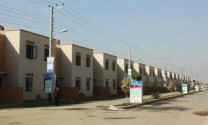SBP keeps rates on hold: Pakistan inflation risks are back on the radar
The rate-easing cycle has ended an increase is likely in Q2-2012.

SBP keeps rates on hold: Pakistan inflation risks are back on the radar
After cumulative rate cuts of 200bps at its previous two meetings, the State Bank of Pakistan (SBP) has struck a note of caution about the government’s medium-term outlook, warning that inflationary pressures are building again. At its 30 November meeting, the SBP kept policy rates on hold, with the overnight deposit and lending rates unchanged at 9% and 12%, respectively. The SBP says that macroeconomic risks have increased since the October meeting, with inflation remaining high and the rupee coming under renewed pressure.
According to the SBP, inflation will accelerate in 2012 because of a weaker rupee, rising electricity tariffs, and a higher wheat support price. There is also a risk that the government will resort to printing money to finance its large deficit as markets demand higher premiums on Treasury bills and Pakistan Investment Bonds (PIBs).
The global economy has also deteriorated, leading to a sharp slowdown in export growth and capital inflows. The government has had to shelve plans to tap credit markets, kick-start the privatisation programme and attract investment through the auction of 3G licences. FX reserves declined to $13.3bn in November from $14.8bn in June. The rupee has come under renewed pressure, trading at 88.75 to the dollar on November 30. It is likely to face more headwinds in 2012 because of large external debt payments, including repayments to the International Monetary Fund (IMF).
Markets were pricing in a 50bps cut and yields would likely inch higher in response to such a decision by the SBP. It is very likely that the rate-easing cycle has come to an end, with little room in the near future to bring rates down further. The SBP is likely to keep rates on hold in Q1-2012, with a strong possibility that rising inflation will force it to hike as early Q2-2012.
Growth outlook remains weak
The growth outlook remains weak: the IMF projects 3.5% y/y growth in FY12, lower than the government target of 4.2%. The key concern is the slowdown in export growth owing to a decline in cotton prices and weak credit growth. Despite 200-bps worth of policy rate cuts since July 2011, private-credit growth had slowed to 1.6% year-on-year by November 11, from 5.5% at the end of 2010. This is primarily because of heavy government borrowing from banks, leading to a crowding out of private-sector credit. Private-sector investment spending declined to 8.5% of GDP in FY11 (year ending 30 June 2011), from 15% in FY08, mainly owing to a debilitating power crisis, political and security concerns and risk aversion by banks.
After posting record export growth of 29% y/y in FY11, Pakistan’s exports have slowed markedly so far in FY12. Export growth fell to 8% in October 2011, mostly owing to a decline in commodity prices (exports are heavily concentrated in cotton and textiles) and the weak global economy. Export receipts are not likely to increase, un fact they will probably decline and this will impact manufacturing sector output and lead to lower growth. Hence, in 2012, the SBP will have to balance inflation risks against concerns about weak growth.
Inflation to go up in 2012
Headline inflation has declined so far this year mainly because of the base effect of high inflation in the same period last year, owing to flood damage to food crops. Changes introduced in the benchmark consumer price index (CPI) index are also a factor; these include a reduction in the weightings of food and energy commodities – the key inflation drivers over the last four years. Headline inflation declined to 10.5% year-on-year in September 2011, its lowest level in the last two years. However, the SBP notes that inflation has remained high, with rising core inflation indicating a build-up of inflationary pressure. In October, CPI inflation accelerated to 11% year-on-year from 10.5% in September. The SBP is “uncertain” that inflation will come down to single digits in 2012, as targeted by the government, and has maintained its FY12 inflation forecast at 12%. This implies that CPI inflation will rise in 2012, driven mainly by a weaker rupee and an expansionary fiscal policy. Decisions such as a 10.5% increase in the wheat support price will also add to food inflation.
With the rates kept on hold, markets will now demand higher premiums to hold government paper. This could force the government to print money to finance its large deficits, and further fuel inflation.
The writer is an economist at Standard Chartered Bank (Pakistan) Ltd
Published in The Express Tribune, December 5th, 2011.


















COMMENTS
Comments are moderated and generally will be posted if they are on-topic and not abusive.
For more information, please see our Comments FAQ